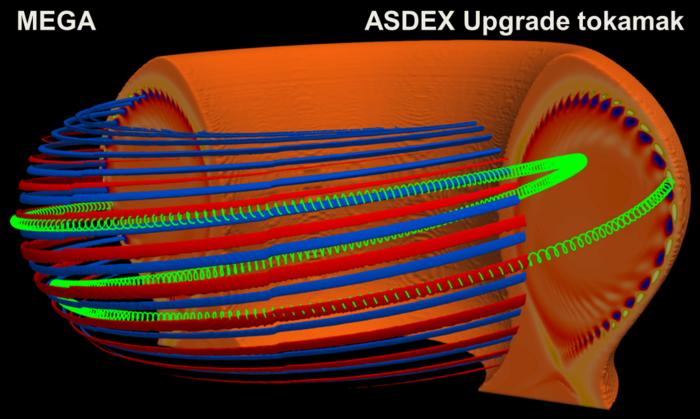
The quest for sustainable energy sources has long challenged scientists around the globe, and amidst this search, nuclear fusion has emerged as an exceptionally promising candidate. Often described as the energy source of the stars, fusion presents an alluring prospect of a clean and virtually limitless energy supply capable of meeting the rising demands for power on Earth. However, reaching the point of operational nuclear fusion is fraught with difficulties, and one of the keys to successful implementation lies within the advanced design of tokamak reactors.
Tokamaks utilize sophisticated magnetic fields to confine plasma, the high-energy state of matter essential for fusion reactions. The potential for tokamaks to produce a self-sustaining fusion reaction hinges upon achieving high levels of plasma confinement. This is the ultimate goal of the ITER project, the world’s largest tokamak currently being built at Cadarache in France. Securing plasma edge stability within a tokamak is fundamental for confining plasma effectively, yet this stability is regularly compromised by edge instabilities.
These instabilities are known as Edge Localized Modes (ELMs), revealing their magnetohydrodynamic nature, which can lead to significant particle and energy losses during operation. One might liken these escapes to solar flares erupting at the outskirts of the sun, where excessive energy expulsion can lead to severe erosive damage and heat fluxes that could compromise the integrity of the plasma-facing components within fusion devices. It is vital that the energy and particles escaping in this manner are minimized if future tokamak reactors, particularly ITER, are to operate successfully.
Research has illuminated that energetic or suprathermal particles constitute a crucial component in maintaining both momentum and energy within plasma. Their proper confinement is essential for establishing a self-sustaining fusion reaction. Consequently, an international collaboration has emerged to scrutinize the pivotal influence of these energetic ions on ELMs, seeking to elucidate the mechanism by which they interact. A synthesis of experimental data, advanced modeling approaches, and sophisticated simulations has formed the backbone of this research initiative, conducted primarily using the renowned ASDEX Upgrade tokamak at the Max Planck Institute for Plasma Physics in Garching, Germany.
The simulations utilized a hybrid code known as MEGA, designed specifically for calculating the self-consistent interactions between ELMs and energetic particles. The collaboration’s findings have proffered fresh insights into the underlying physics of ELMs when these energetic particles are present. Notably, the analysis indicates that the spatio-temporal fabric of ELMs undergoes significant alterations driven by the presence of energetic particle populations, which in turn launches a profound inquiry into the interaction dynamics at play between the ELMs and energetic ions.
Understanding this interaction allows researchers to grasp the correlations between experimental signatures of ELMs detected via magnetic diagnostics and fast-ion loss detectors. As detailed in a notable recent publication in Nature Physics, this work speaks volumes about the potential advancements in nuclear fusion research. The results critically underscore that the interaction between ELMs and energetic ions is characterized as a resonant exchange of energy, an analogy that could extend into practical applications in the control of ELMs.
To parallel this concept, the main author of the study, Jesús José Domínguez-Palacios Durán, provided an evocative analogy: much like a surfer riding a wave and leaving visible footprints, in plasma, energetic particles interact with the MHD waves (the ELMs). The repercussions of this interaction can modify the spatio-temporal structure of these waves, revealing an intricate tapestry of behaviors that can lead to innovations in ELM control techniques.
The research validates that a robust exchange of energy and momentum between ELMs and energetic ions is likely to be observed within ITER as it embarks on its operational journey. This newfound knowledge not only explains complex plasma behaviors but also opens pathways for using energetic particles as active actuators to refine control mechanisms for these MHD waves. Thus, the work conducted heralds a significant milestone in the ongoing efforts to resolve the challenges faced by nuclear fusion technology.
Indeed, the implications of this research stretch beyond theoretical curiosities, presenting practical pathways that can ultimately inform the design and operation of future tokamak reactors. Establishing a reliable grasp of the dynamic interactions between energetic ions and ELMs will enable scientists to craft strategies that mitigate the energy losses and damages currently witnessed in existing devices.
The groundwork laid by this collaborative effort forms a cornerstone for advancing knowledge in this critical aspect of fusion science, underpinning future endeavors aiming to realize the dreams of clean and abundant fusion energy. As this investigation continues, it promises to yield insights that not only propel scientific inquiry but also bring nuclear fusion closer to its long-awaited promise as a viable energy source.
This groundbreaking work has received financial backing from several prestigious institutions, including the European Research Council and the EUROfusion Consortium, as well as governmental support from the Spanish Ministry of Science, Innovation, and Universities along with the Junta de Andalucía. In concert, these funders enable continued exploration of this significant area of nuclear plasma research, fostering an environment ripe for discovery.
As the landscape of sustainable energy evolves, contributions such as those made by this international team represent critical steps forward, enhancing our comprehension of fusion dynamics while also addressing the pressing energy needs of a growing global population. Future research will undoubtedly build upon these findings, driving us closer to realizing the transformative potential of nuclear fusion.
Subject of Research: Interaction of energetic ions with ELMs in tokamak plasmas
Article Title: Effect of energetic ions on edge-localized modes in tokamak plasmas
News Publication Date: 6-Jan-2025
Web References: http://dx.doi.org/10.1038/s41567-024-02715-6
References: N/A
Image Credits: Figure adapted from J. Dominguez-Palacios et al., Nat. Phys. (2024), under a Creative Commons license CC BY 4.0
Keywords
Fusion energy, Plasma, Energetics, Fusion reactors, Scientific publishing





